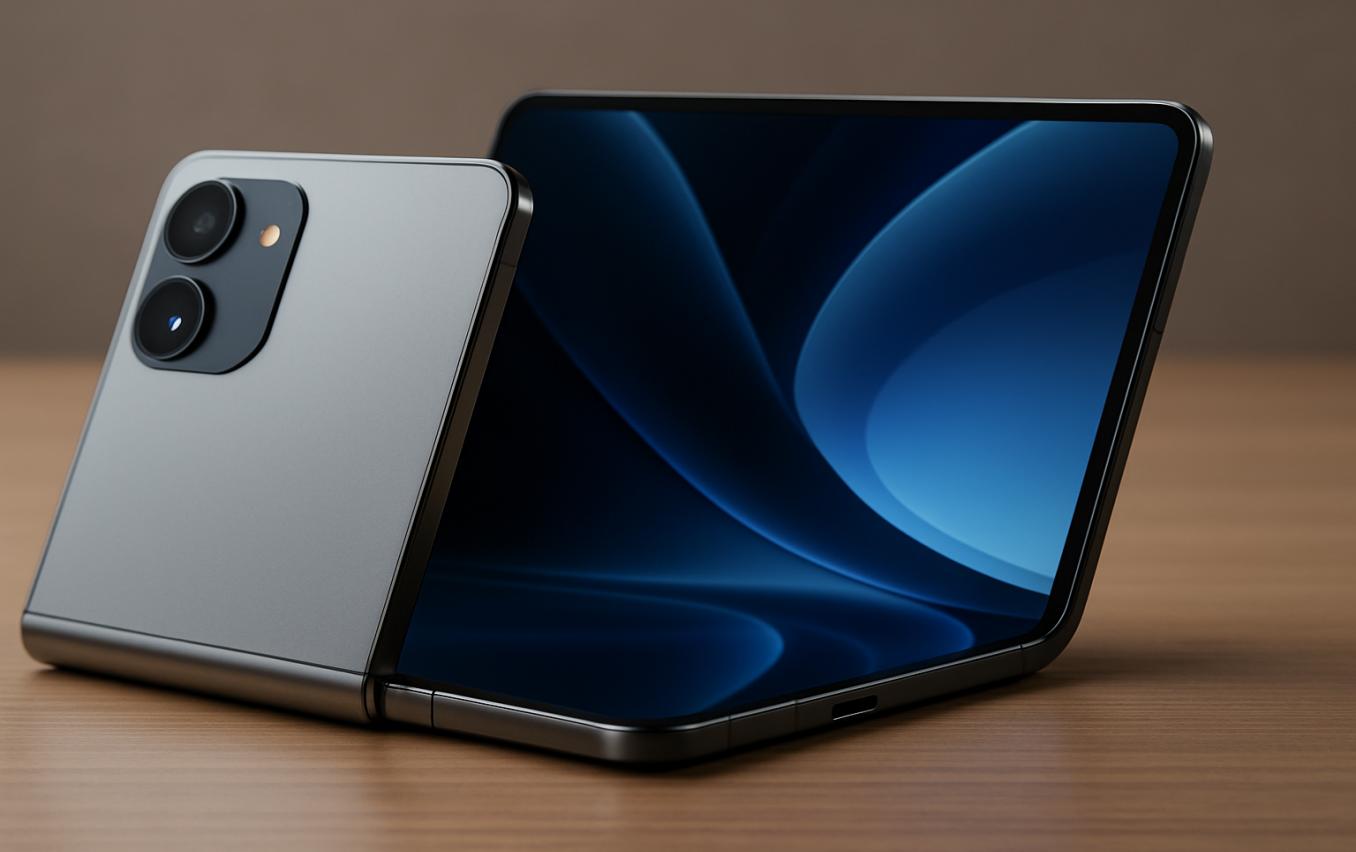
Recently, technology media have been closely following the rumors about Apple's next-generation foldable device, iPhone Fold, whose core parameters point to a technological breakthrough with an unfolded thickness of 4.5 to 4.8 millimeters. From an engineering perspective, this radical design faces systematic challenges in the three major fields of materials science, mechanical structure, and thermal management. Its feasibility deserves in-depth deconstruction from the technical principle level.
In terms of material strength, the current ultra-thin glass (UTG) technology has not yet broken through its physical limits. The 0.3mm UTG used in the current mainstream foldable screen devices has significant defects in the uniformity of surface compressive stress distribution after repeated bending. If Apple were to compress the unfolded thickness to 4.5 millimeters, it would mean that it would need to develop a new type of composite material with a thickness of less than 0.2 millimeters. This material must withstand more than 200,000 bending tests while maintaining a scratch resistance of over 6 on the Mohs scale. Although the current laboratory-stage silicon carbide/graphene composite films have met the theoretical strength standards, the yield rate of their mass production process is less than 35%, and there is still a technological gap from consumer electronic-level applications.
There are engineering paradoxes regarding the reliability of mechanical hinge systems. According to the patent documents disclosed, Apple may adopt a dual-axis waterdrop-shaped hinge design, which requires a zero-gap fit in the closed state. However, the existing simulation data show that when the screen curvature radius is less than 2.5 millimeters, the stress concentration coefficient at the hinge position will exceed the material yield strength. If a closing thickness of 9 to 9.5 millimeters is forcibly achieved, it will inevitably lead to accelerated metal fatigue of the hinge assembly. Compared with the 6.1-millimeter closure thickness of the Samsung Galaxy Z Fold6, the Apple solution needs to address the durability issue brought about by a 40% increase in the hinge torque coefficient, which is difficult to achieve within the existing framework of micro-bearing technology.
The physical limitations of the thermal management system form a fundamental obstacle. The 4.5mm body thickness means that the thickness of the heat dissipation layer has been compressed to within 0.8mm, and the TDP of the A series chips is expected to exceed 8W. The thermal conductivity of the existing aerogel insulation material at a thickness of 0.5 mm is 0.018W/(m·K). To maintain the processor temperature below 45℃, a three-layer composite heat dissipation structure needs to be constructed. However, this design would occupy a vertical space of 1.2 millimeters, directly conflicting with the goal of ultra-thin design. What is more serious is that the double-layer OLED screen in the folded state will produce a superimposed thermal effect. The existing thermal simulation model shows that the local hot spot temperature may reach 58℃, which is beyond the safe working range of silicon-based chips.
From the perspective of electromagnetic compatibility, the ultra-thin body imposes significant constraints on antenna design. The 5G millimeter-wave frequency band requires at least three independent antenna arrays, and each array needs a clear zone of 2×3mm². Arranging a complete antenna system within a thickness of 4.5 millimeters will inevitably lead to space competition between the RF module and the battery assembly. At present, the thickness of the radio frequency front-end module (RFEM) is 1.2 millimeters. If necessary shielding layers are superimposed, the actual occupied space will exceed 120% of the designed capacity. This spatial contradiction might force Apple to adopt a diversity antenna solution, but it would lead to signal attenuation of more than 15%.
The precision requirements of the manufacturing process are close to the physical limit. When CNC machining 0.3-millimeter grade metal middle frames, the tool wear rate increases exponentially. The positioning accuracy of the existing five-axis machining center is ±2μm, while the assembly tolerance requirement of iPhone Fold is controlled within ±0.5μm. This precision requirement demands the development of a brand-new liquid metal forming technology, but the control of the solidification shrinkage rate of this technology has yet to break through the industry bottleneck of 0.3%. A more realistic issue lies in the fact that the impact resistance of ultra-thin bodies will decline significantly, and the drop test pass rate may be less than 60% of that of existing models.
The law of technological evolution shows that there is a law of diminishing marginal benefits in the thickness reduction of consumer electronic products. When the thickness of the fuselage is less than 5 millimeters, the R&D cost required for every 0.1 millimeter reduction increases exponentially. If Apple insists on pushing forward with the 4.5-millimeter design plan, it may fall into a dual predicament of technical feasibility and commercial rationality. From the perspective of systems engineering, this radical design is more like a demonstration of technical concepts rather than a mature solution with mass production value. Under the existing framework of materials science and manufacturing processes, the thickness index of the iPhone Fold may need to be recalibrated in order to find a balance between technological innovation and product reliability.

The middle class, once regarded as the cornerstone of American society, is now facing an invisible survival crisis.
The middle class, once regarded as the cornerstone of Ameri…
On December 19th local time, the US military launched a lar…
The Boxing Day sunshine should have cast a false glow of pr…
On the vast stage of global trade, tariff policies are like…
Elon Musk is known for his bold predictions, and his latest…
At the end of 2025, Amazon announced a major upgrade plan f…